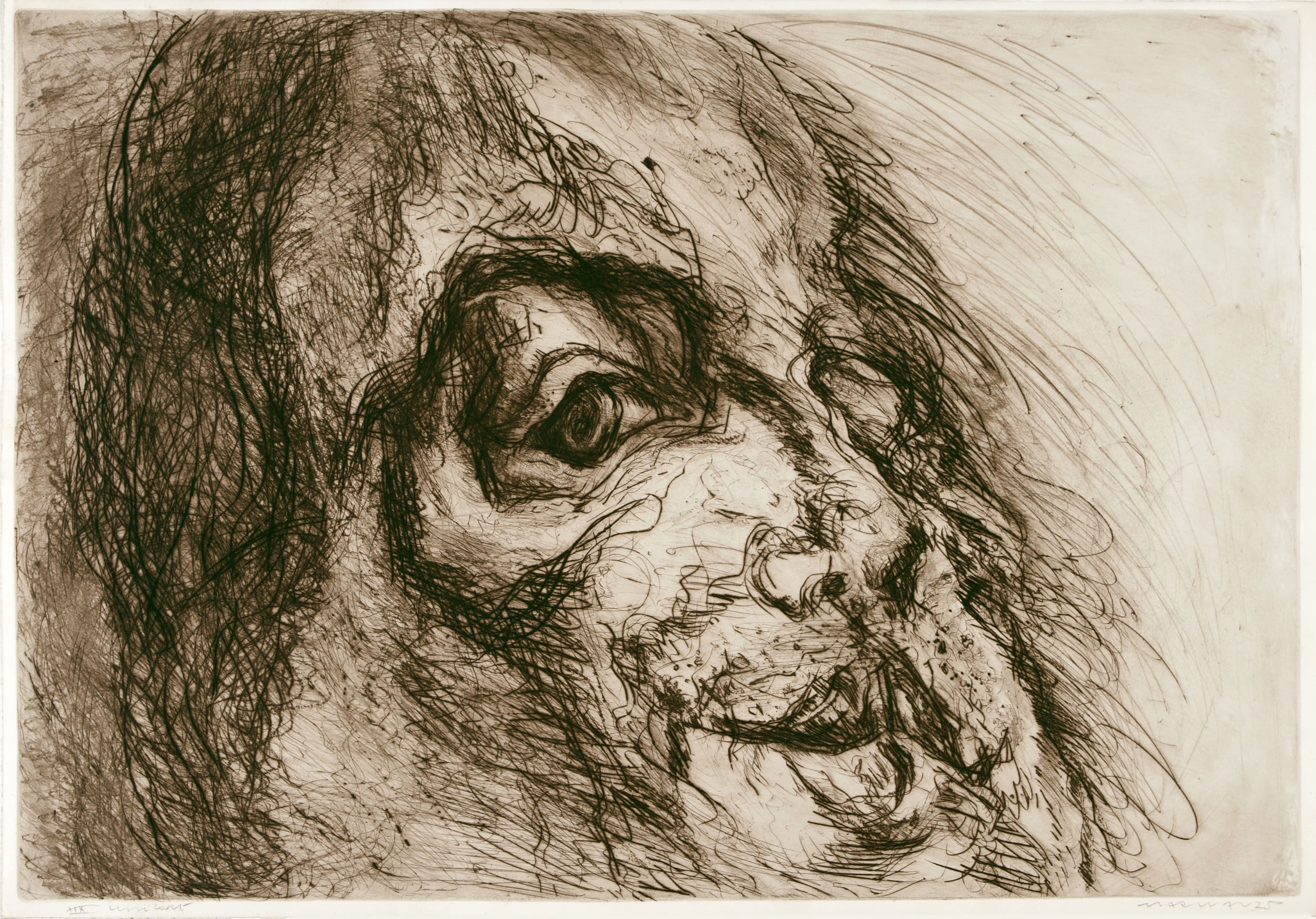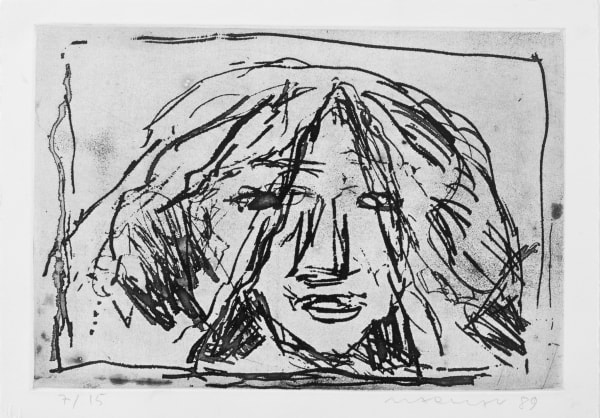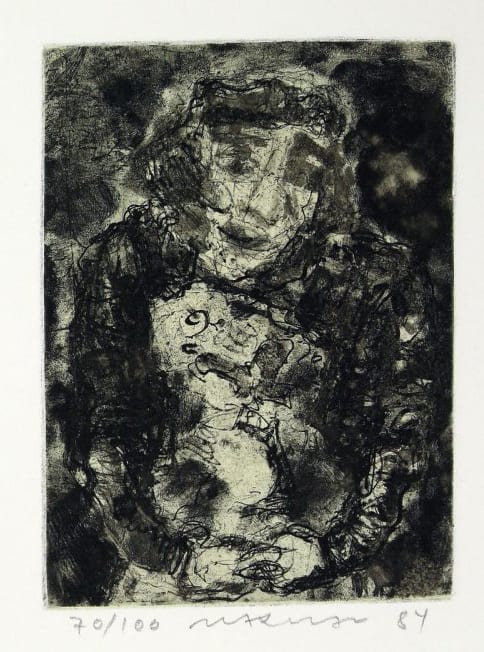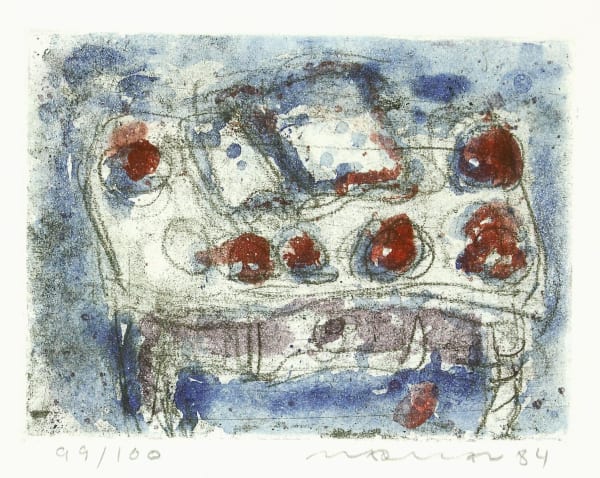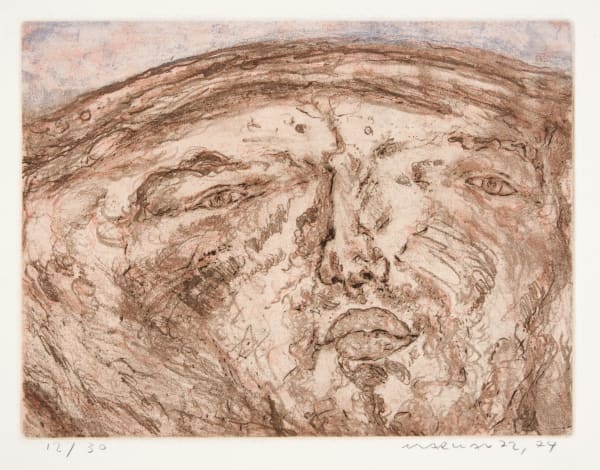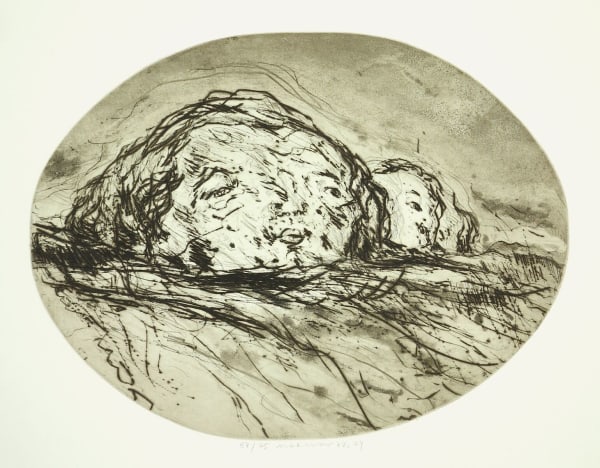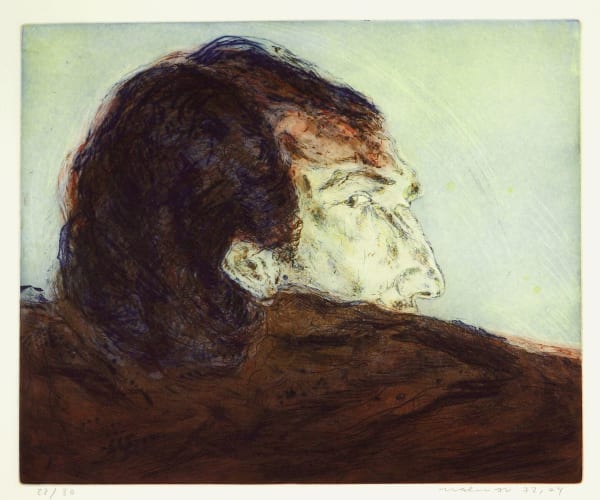-
In this latest installment of the ongoing series of exhibitions focused on printmaking in the Arab world, Meem Gallery presents over 40 editioned works created by Marwan between 1967 and 1999.
Internationally celebrated as a master painter, Marwan (1934-2016) also engaged in a less well known but equally accomplished printmaking practice throughout his career. Born in Damascus in 1934, the artist permanently moved to Berlin in 1957 where his exposure to Art Informel and the German Neo Expressionist movements led to the development of his highly distinctive style.
Installing a French printing press in his studio, Marwan's printmaking developed simultaneously with his painting practice. Masterfully harnessing the complex chemistry and technical processes associated with the medium of etching, the artist skillfully incorporated his signature painterly effects into his printed works.
-

Im Bett (1972-74), etching, 34 x 45 cm.
-
Notable developments in themes, techniques and use of colour can be witnessed in the artist’s work during a year spent in Paris, in 1973.
Marwan's faces started to transform, gaining new depths from the increased emphasis of wrinkles and crevices. Vivid colours accentuate the works, lending a heightened vibrancy to his characterful subjects. Besides Marwan's well-known figures and faces, this exhibition also presents several rare examples of his still lifes. Tables laden with fruit and crockery are rendered in the same sketchy, expressionistic manner as his human subjects, similarly transforming the banal subject matter into complex existential studies. Brought together for the first time, and created in parallel with his paintings, the works in this exhibition not only showcase the prolific scope of Marwan's little-known printmaking practice, but additionally display his mastery of the notoriously complex process of etching.
-
-

-
The earliest works in this exhibition demonstrate Marwan's initial focus on the human body.
Monochromatic studies of stylised, contorted figures, including Der Unverdeckte, a set of six etchings made in 1969, undoubtedly demonstrate the influence of the New Figuration movement on the young artist. The 1970s saw Marwan increasingly focus on the head/ face, soon becoming the subject matter that he would become most renowned for, as evidenced in the many works in this exhibition. Revealing rich topographies of spontaneous, raw expression, these works, generally referred to as the artist's Kopf or ‘face' landscapes, poignantly manifest the varied experiences of the joys and hardships of life by utilising the rich contours of the human face.
-
-
"A single canvas would carry many faces on top of each other and one painting would often need several years of work before it was considered finished by the artist.”
Jimmy Dabbagh in: Marwan Kassab – Bachim an artist who challenged the landscape of portraiture, The Arab Weekly, 2016)
Widely known by his mononym, Marwan, Marwan Kassab Bachi was born in Damascus in 1934. After studying Arabic literature at the University of Damascus from 1955 to 1957, he moved to Berlin where he studied under Hann Trier, an exponent of Art Informel at the Hochschule für Bildende Künste, going on to graduate in 1963. This exposure to Art Informel - a form of Abstract Impressionism, with its characteristically expressive and gestural qualities, led to the development of the artist's highly distinctive style with which he explored the manifold complexities of the human condition.
On his arrival in Berlin in 1957, Marwan, who had originally planned to study in Paris, found a city in the depths of political and social upheaval. Artists and intellectuals fed off the frenetic atmosphere, finding inspiration amidst the chaos. On November the 10th, 1958, Soviet Premier, Nikita Khruschev demanded that the Western powers of the United States, Great Britain and France withdraw out of West Berlin within six months, leading to the historic division of the city and the erection of the Berlin wall in 1961. It was here that the young Marwan found his place in the world, surrounded by an exciting new cultural milieu, most notably, a generation of artists that would come to be known as German Neo-Expressionists.
More widely associated with the New Figuration movement of the 1960s that centered on the revival of figurative painting, following the trend for post-war abstraction in the West, the German Neo-Expressionists including artists such as Georg Baselitz and Markus Lupertz were known for their intense subjectivity and rough handling of materials. Marwan's use of layered colour and tone, textured, painterly style, and idiosyncratic approach to the human form placed him firmly within the movement.
From the earliest stages of his artistic career, Marwan captured the dynamism of the human body in his painting and printmaking practices. Contorted, surrealistic bodies expressively conveyed the plethora of joys and torments of man's earthly experience. A notable early series titled, Khaddouj was inspired by his family's unusual looking domestic maid, back in Damascus. As well as her odd appearance, Marwan also associated her with many formative adolescent memories, leading him to channel her image into a visual metaphor that would reappear time and time again throughout his life's work.
Marwan: Marwan Editions (1967—1999)
Past viewing_room
